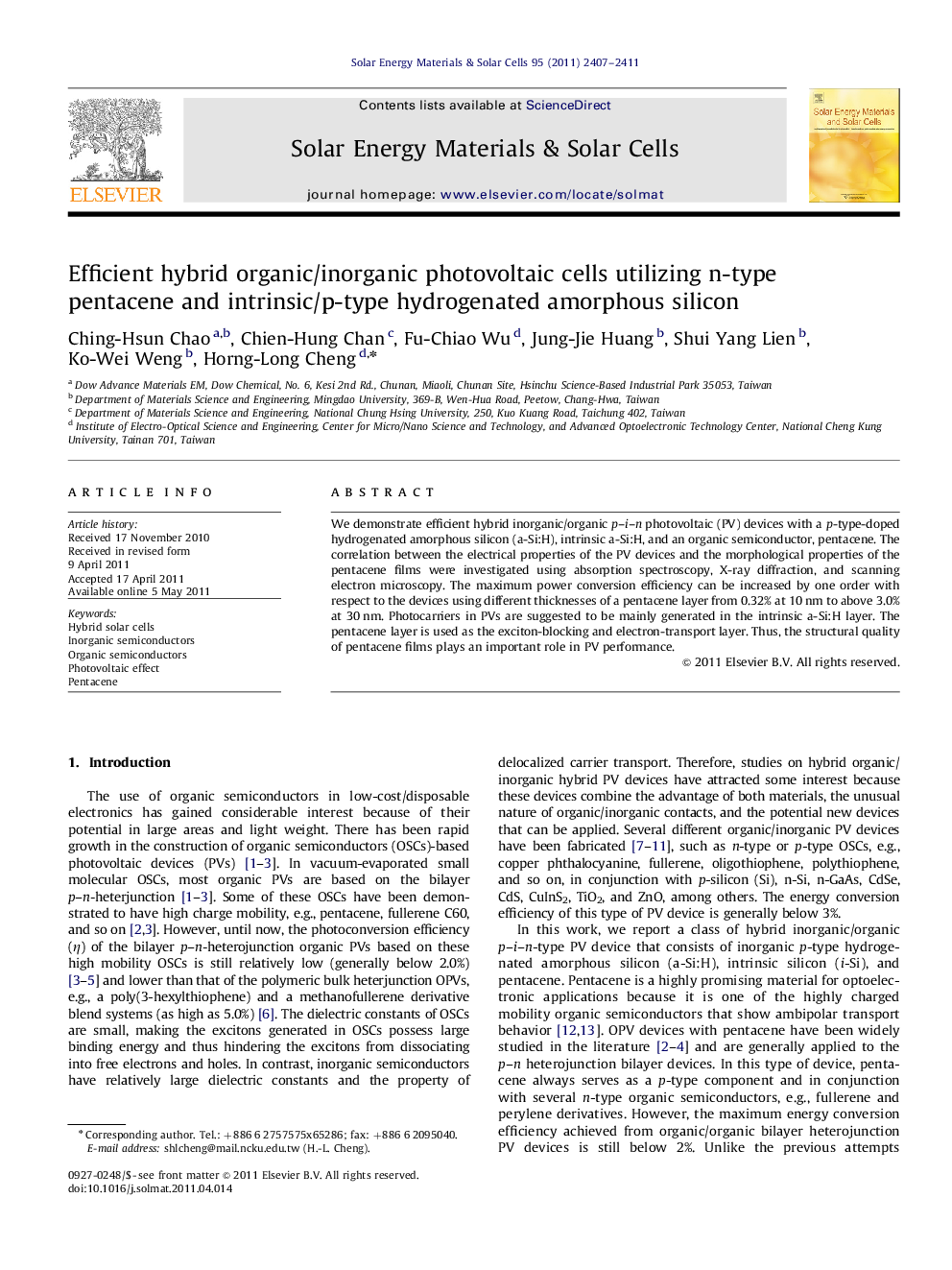| Article ID | Journal | Published Year | Pages | File Type |
|---|---|---|---|---|
| 78797 | Solar Energy Materials and Solar Cells | 2011 | 5 Pages |
We demonstrate efficient hybrid inorganic/organic p–i–n photovoltaic (PV) devices with a p-type-doped hydrogenated amorphous silicon (a-Si:H), intrinsic a-Si:H, and an organic semiconductor, pentacene. The correlation between the electrical properties of the PV devices and the morphological properties of the pentacene films were investigated using absorption spectroscopy, X-ray diffraction, and scanning electron microscopy. The maximum power conversion efficiency can be increased by one order with respect to the devices using different thicknesses of a pentacene layer from 0.32% at 10 nm to above 3.0% at 30 nm. Photocarriers in PVs are suggested to be mainly generated in the intrinsic a-Si:H layer. The pentacene layer is used as the exciton-blocking and electron-transport layer. Thus, the structural quality of pentacene films plays an important role in PV performance.
Graphical abstract.Figure optionsDownload full-size imageDownload as PowerPoint slideHighlights► We demonstrate efficient hybrid p–i–n solar cells by combing a-Si:H and pentacene. ► Photovoltaic properties depend on the structural quality of pentacene layer. ► The pentacene layer is used as the exciton-blocking and electron-transport layer. ► The power conversion efficiency was over 3.0% when using 30 nm pentacene films.
